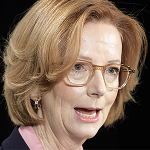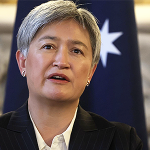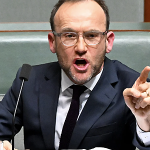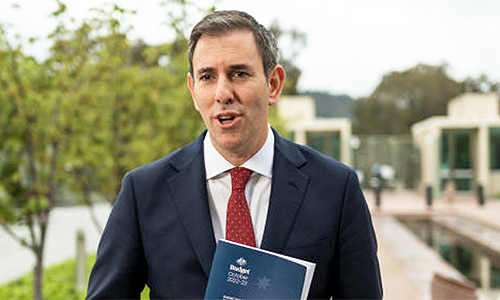Paul Kelly thinks that the Albanese victory on May 3, 2025, is the beginning of a long and stable Labor era, and the failure of Mr Dutton to hold his seat is indicative of the Liberals being in the political wilderness for a long time to come. Yet, whilst the ALP indeed does have a solid parliamentary majority, things are a lot softer for the ALP in the electorate than the number of parliamentary bums on ALP seats might seem to indicate.
With each of the two centrist party blocks only achieving one-third of the primary vote, preferences from minor parties (mainly the Greens) were the decisive factor in this ALP victory. This is ironic considering that the Greens lost three of their four seats and lost their leader, all to the electoral gain of the ALP. Had the LNP been just a bit stronger, the ALP would have been a minority government at the behest of the Greens.
Preference politics has become increasingly important in Australia this century. Bear in mind that out of the 150 electorates, only 15 parliamentarians in the 2025 election reached 50 per cent of first preference votes.
That is, nine tenths of all seats secured in this election were preference dependent.
In this context minor parties and preference deals played the decisive role in the outcome. The ALP did not have a striking and winning campaign, even though the LNP certainly had a losing campaign. It is the scale of the LNP implosion that made the preference flow work for the ALP rather than any strong ALP campaign.
The underlying indecisiveness of the electorate, and its frustration with both major party blocks, has not gone away. Prime Minister Albanese cannot rest on his laurels for the next election. Unless, as Paul Kelly suspects, the LNP basically dissolves as a viable political opposition. But even that will not take away the underlying problem: the centre is in trouble.
Take the ALP. Where are the traditional workers and lower income parties’ support base, now that – after Hawke and Keating’s Reagan and Thatcher synchronised neoliberal adventure – manufacturing and agriculture are decimated as employers? And the ALP killed the union movement too, which has shrivelled to a shadow of its pre-Hawke vitality. Only 13 per cent of Australian employees are now unionised. What does ‘Left’ now mean?
Into the post-industrial and globalised void of the political meaning of the ALP comes the Green movement. This is not just an environmental movement, this is a spiritual and moral movement.
Having secularised from the 1970s on, the Catholic and Methodist roots of the ALP which gave it its moral and metaphysical bearings, have shrivelled up. The Left is no longer guided by Rerum Novarum or the Bible, but its beacon of meaning is now a university-promoted pragmatic and materialist progressivism.
This ideological leftism has no connection to actual workers or viable national industries. This effete intellectual progressivism is the ideological grounds that the Greens occupy, and they offer it, and a secularised form of apocalyptic fear and Utopian hope, to urban middle-Australia voters.
Thus does the periphery become embedded in the centre, and thus does the centre become lost, for as much as we all love nature, the moral and spiritual vision of the Greens is only really at home in an elite university-educated and typically well remunerated reality bubble.
This does not resonate with the majority of Australians.
And when it comes to Green morality crusades, its screaming opposition to sex-based rights for women, its pouting queer pride, and its smorgasbord of colonial, patriarchal, and environmental guilt-trips, is simply incomprehensible to the majority of ordinary Australians. But our educational institutions, our government services, and even our large corporations, are trying to go as rainbow as they can. Which makes sense. For where the underlying ‘bottom line’ in any institution is simply power, then ‘Woke’ morality is a gift.
It works like this: by the token inclusion of a few diverse symbolic victims, pragmatic amoralism at an institutional level can be beautifully rainbow-washed.
But none of this really works. The ‘centre-left’ has no real philosophical distinction from the ‘centre-right’ as the centre’s only ‘bottom line’ metric of success is the optics of pragmatic econometric management. So the centre-left is lost and does not know what its high purpose and its core philosophical commitments are, whilst the far-left (the Greens) obligingly fill that meaning void with impossible moral and spiritual tripe.
The centre-right is no different in kind, though it is different in degree (i.e. more lost). For what are conservatives conserving, what does liberty now mean in a world totally tangled in a hyperactive flood of laws and regulations, and what is the high meaning horizon to the Common Good that we can all get behind other than flag-waving, money-accumulating, consumerism?
In this environment, the more extreme forces of peripheral parties and personalities are thrashing around looking for the lost centre that can anchor our common way of life in real value and meaning. And the centre is now largely at the mercy of those peripheral search for meaning engines that have arisen because of the meaning void at the centre of Australian political life.
It’s a tough challenge for a viable civil life that we face now, fellow Australians.










